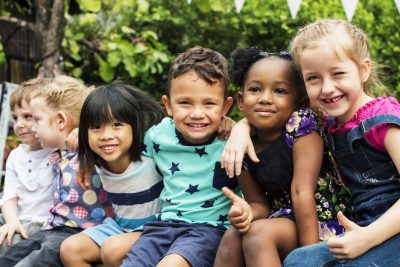While school facilities are closed because of COVID-19, families impacted by disability face complex challenges. For some, children’s difficult behaviors are a regular concern. According to the Centers for Disease Control and Prevention (CDC), stress and anxiety in children and youth may show up through unexpected or maladaptive behaviors. Those behaviors might get worse because of fear, isolation, and disrupted lives.
Meanwhile, some of the help that used to be there is gone. At school, students may have gotten 1:1 support or direct instruction to encourage behavioral skill-building. Those aspects of a special education program might be difficult or impossible to provide during social distancing.
While students are learning from home, parents can request individualized support from the school to support behavioral expectations, if behaviors have educational impact. Parent training can be a related service in a student’s Individualized Education Program (IEP). As always, family caregivers can request an IEP meeting to discuss options to support academic and behavioral goals and expectations.
If the student has a Behavioral Intervention Plan (BIP), that document might hold clues about strategies most likely to work. For more ideas about how to communicate with the school in reviewing a student’s program and perhaps also designing a temporary Continuous Learning Plan, parents can refer to PAVE’s article: IEP on Pause? How to Support Continuous Learning with School Buildings Closed.
To generally support caregivers in their various roles during COVID-19, Washington’s Office of Superintendent of Public Instruction (OSPI) offers a three-part webinar designed for families to help with behavior in continuous learning environments. The webinar has been recorded and uploaded to YouTube in sections, so families can access the content at their own pace.
The webinars are moderated by Lee Collyer, OSPI’s program supervisor for special education and student support. Collyer, a parent, describes his own challenges during the pandemic alongside ideas from research-based sources. Families are invited to send questions and comments to lee.collyer@k12.wa.us.
In various forums, Collyer has described his investment in fostering positive behavioral supports for students in order to reduce disciplinary actions. In a May 13, 2020, OSPI webinar about Mental Health and Safety, Collyer said, “My fear is that we’re going to try to discipline our way out of trauma.”
Following is a brief description of each segment of the three-part webinar series, with a link to each specific webinar. If you start with the first one, you will have the option to stay connected and flow through all three. Each segment is 20-25 minutes long, and the first one includes some background information about OSPI and Collyer’s role.
Supporting Positive Behavior in Continuous Learning Environments – Part One
Collyer begins the series by sharing OSPI’s official statements related to mission, vision and equity. He offers reassurance to parents that everyone is learning something brand new together, without time for proper training, and that “We should not let pressure from schools, teachers or school communities dictate what works for our family and what kind of learning we are prioritizing during this time.”
Collyer talks about the value of learning that is imbedded in everyday activities and part of family routines. He shares insights from psychiatrist Bruce Perry and psychologist Ross Greene, both widely regarded authors who apply their research to inform parents. Their names are linked here to practical articles about supporting positive behavior, and both are easily searchable to find additional materials.
The OSPI webinar includes signs of stress and anxiety to consider. Collyer recommends behavior solutions based on skill building: If children do not know how to do something (like behave), the answer is to teach, he points out, not punish. The segment ends by explaining how behavior serves a function and understanding that function is key to reducing escalations.
Supporting Positive Behavior in Continuous Learning Environments – Part Two
The second segment begins where the first leaves off, by discussing the functions of behavior and how to identify them and intervene early. Pre-teaching skills and reinforcing positive behaviors over negative ones in a 5:1 ratio is encouraged: For the best outcome, catch a child doing what is expected and provide encouragement five times more often than calling out an unexpected behavior.
The second segment also provides some specific strategies for home/school communications. Collyer describes the difference between a consequence and problem-solving and offers specific strategies for parent/child problem-solving.
Supporting Positive Behavior in Continuous Learning Environments – Part Three
The third segment begins with information about how a crisis might escalate and how reason and logic are compromised when fear and frustration highjack a person’s response system. Adults may need to consider their own escalation cycles and develop a personal plan for self-control to support children, Collyer says.
He describes how children might be uneven in their development of cognitive versus social-emotional skills and how that might create confusion about the best parenting strategy. How to set limits with considerations for trauma and ways to shift from negative to positive interventions are additional strategies provided in the final segment of this webinar series.
For additional resources from OSPI, visit the page for Special Education Guidance for COVID-19.

